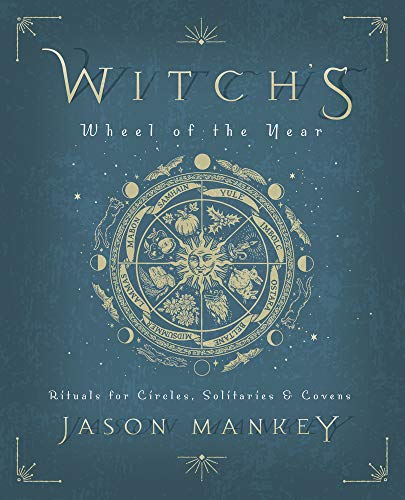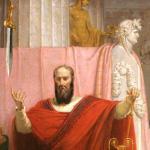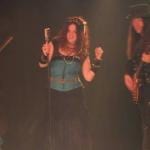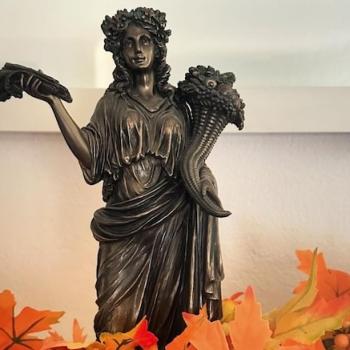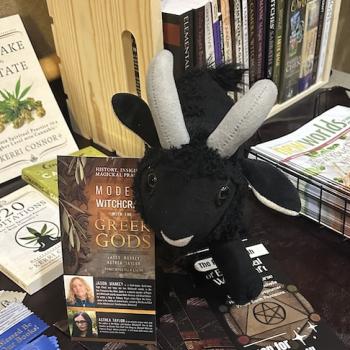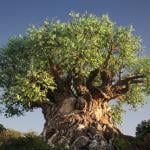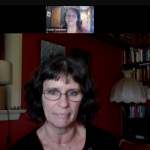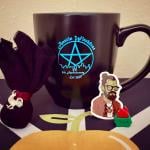Despite originally being an initiatory tradition, Modern Witchcraft has sky-rocketed in popularity in large part due to books. Before encountering another Witch, most of us read a book or two, or several dozen. The following books on this list are in my opinion the most influential Witch books ever. Every book on this list opened a door or two for somebody, and most of them are still doing that today!
Some people count sheep when trying to fall asleep, I come up with lists like this one!

Please remember, this is my list, I’m not claiming that it’s anything other than that. Disagree? Great! Articles like this are designed to start conversations, not end them!
CLASSICS
Before people were publicly identifying as Witches several books were released that helped “set the stage” so to speak. Without these books, Witchcraft as we know it today would be much different.
Aradia: Or the Gospel of the Witches by Charles G. Leland (1899)
It’s fitting that we begin our journey with Aradia because I believe it to be the most important Witchcraft book written in the modern age. Over the course of just over 100 pages it provides a solid ritual outline, effective spellwork, and a cosmology that’s at least familiar to most Modern Witches. It also contains a proto-Charge of the Goddess and a ceremony that reminds me of Cakes & Ale.
The Golden Bough by Sir James Frazer (1906-1915, a one volume edition appeared in 1922)
Frazer was not a Witch or a Pagan, but much of what we believe in Greater Pagandom comes straight from Frazer. The modern Wheel of the Year Cycle containing a sacrificial god comes from Frazer, as do many of our ideas about sabbats such as Samhain or Beltane.
The Witch-Cult in Western Europe & The God of the Witches by Margaret Murray (1921 & 1931)
To put it simply, Murray’s books might have made you want to identify as a Witch! Her Witches loved the earth and the turn of the seasons, and while they did sacrifice a baby or two, she made it all come across as a giant misunderstanding. Many of the ideas expressed in her books were flat out wrong, but because her books contain transcripts from the Witch Trials of the early modern period, people continue to quote her work and bring the ideas in her books into the ritual circle. Also, she’s probably responsible for creating the idea of the Horned God as a figure encompassing many ancient deities.
Ozark Superstitions (later retitled Ozark Magic & Folklore) by Vance Randolph (1947 original, 1964 Dover paperback)
Conjure? Hoodoo? Granny Magic? Before the current wave of such books there was Randolph’s classic from the 1940’s. One of the things I love about Randolph’s book is that it places magick firmly in the American mind and worldview, a reality ignored by most historians. Randolph’s work was not initially popular upon its release, but since the 1964 re-release its found its way onto many a Witch’s bookshelf.
The White Goddess by Robert Graves (1948)
Graves does a few different things in his book that were destined to make it a classic. The first is his summary of the Maiden-Mother-Crone figure, one goddess in three. There’s also the Oak King/Holly King idea found in The White Goddess, which takes the ideas of Frazer and makes them even more poetic. He also spends a lot of time on “Celtic” ideas, forever linking Witchcraft with the Celts in the minds of many.

1950’s & 1960’s
In the 1950’s and 60’s the first public Witches stepped forward in Great Britain and the United States. Though none of them felt comfortable writing a “101” book, much of their early work does contain a few things that are readily identifiable to most of us today. None of these books have aged well, but they remain valuable peaks into a different era.
Witchcraft Today by Gerald Gardner (1954)
I find much of Witchcraft Today hard to read and practically worthless, but when Gardner gets away from “history” (I use that term loosely here) and and focuses on practice the book shines. Go back and read the bits about an early Yule ritual in the first chapter, it all adds up. Gardner was the world’s first modern public Witch, and his book changed everything.
Witchcraft: The Sixth Sense by Justine Glass (1965)
This might be the most “unknown” book on my list, but it probably shouldn’t be. Glass’s book is what Gardner probably wished his books were like, readable. Glass’s history of Witchcraft is not particularly good, but as a snapshot in time it’s a fun look into what people were thinking in 1965. Also of historical value is Glass’s use of the word “Wicca” with two c’s (Gardner spelled it with one “c”) and as the name of the Craft of the Wise, religious Witchcraft.
Diary of a Witch by Sybil Leek (1968)
Is this a good book? Absolutely not. Is it bat-shit crazy fun to read? Absolutely! Leek was a full-on sensation in the 1960’s on both sides of the Atlantic and this book illustrates why. She was witty and fun in ways Gerald was not, and an absolutely masterful storyteller. I doubt very much in this book is true, but for decades it was one of the most available and easily devoured books on Witchcraft.
The Weird Ways of Witchcraft by Leo Martello (1969)
This is our first “American Witchcraft” book, and while it’s not all that great today, it provides the first real printed insight into what Witchcraft looked like in the States during the 1960’s. The book is really New York-centric, but that’s pretty common place in all sorts of settings. Martello is an often overlooked pioneer, but he shouldn’t be.
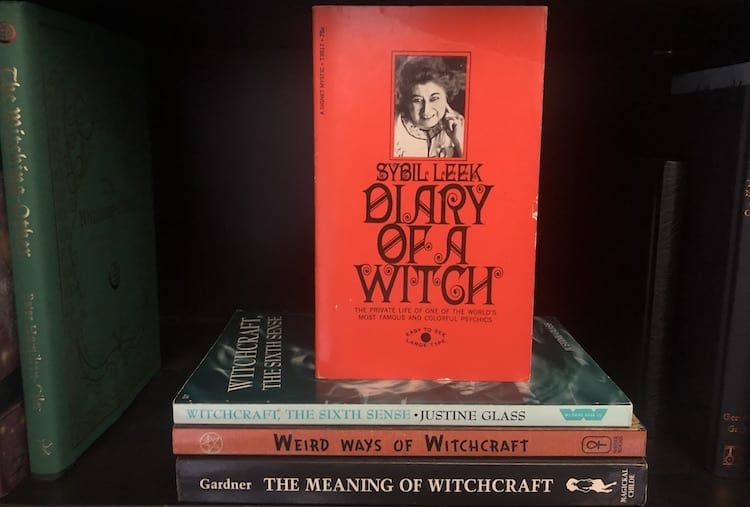
1970’s
It’s in the 1970’s when the cauldron really starts bubbling. It’s the age of the first “how to” books, and truly marks the start of our current golden age in Witchcraft publishing. For the first time there are rituals being published, and books that begin to creep outside the Wiccan-style circle.
Mastering Witchcraft by Paul Huson (1970)
One of the great things about Huson’s book is that it appeals to a broad audience. Don’t like Wicca? Well there’s a lot in here that’s very much un-Wiccan. Looking to start a Wiccan-style coven? Well, the entire last chapter of the book is dedicated to just that. I remain amazed and awed by the longevity of this book and how important it is to various Witch communities.
Lady Sheba’s Book of Shadows by Lady Sheba (1971)
Looking to do some Witch ritual? For better or for worse, Sheba has you covered. Sheba’s (Jessie Wicker Bell) book was the first “Witch book” with full rituals to ever be released by a major publisher. Sheba’s “work” wasn’t her own, it actually came from an English coven and set to her after was initiated “from afar,” but for a short time in made Sheba one of the most important Witches in America, and most importantly opened the floodgates for Witch ritual.
The Tree: The Complete Book of Saxon Witchcraft by Raymond Buckland (1974)
The Tree was the first book to describe an entire Witchcraft system/tradition with some sort of depth, and unlike Sheba’s Book of Shadows, it broke no oaths while doing so. I often think of The Tree as a book for solitaries, but as Aidan Kelly points out in the comments below, it does contain a full compliment of the usual ritual roles one finds in a coven. Still, if you were a solitary, this was probably the place to start in the 1970’s.
When God Was a Woman by Merlin Stone (1976)
The idea that Witchcraft was an ancient Goddess-cult was par for the course though the 1950’s and into the 1990’s, and that was never expressed more beautifully than in Stone’s work. Though a lot of the history doesn’t hold up and this book wasn’t really written for Witches, that’s not really the point, there’s so much here to fascinate and inspire.
Witchcraft for Tomorrow by Doreen Valiente (1978)
Though not my favorite work by Valiente (give me her memoir The Rebirth of Witchcraft everyday of the week!) this is still a tremendous book. It’s a how to book from the woman who wrote many of Modern Witchcraft’s earliest rituals. And Valiente can be counted on to provide clear and practical instructions. The first truly great “101 Book” to come from Great Britain.
Drawing Down the Moon by Margot Adler (1979)
When this book was originally released it was the first complete overview of Witchcraft and Paganism in the United States, and the first book to ever truly explore the history of Modern Witchcraft. It’s also full of interviews with some of American Witchcraft’s most important names, including an interview with Victor Anderson, one of the founders of the Anderson Feri Tradition. Adler’s skill as a journalist is on full display in DDtM, it’s simply better written than much of what came both before and after it.
The Spiral Dance by Starhawk (1979)
Until Starhawk, most Witchcraft books had a decidedly East Coast or English slant, but the Spiral Dance goes in another direction, West (Coast)!. Witchcraft was directly impacted by 60’s counter-culture, and Starhawk expretly captures that energy. Her Witchcraft was more than just a religion or a magickal practice, it became an instrument for social change, an idea that’s been with us ever since. Starhawk is also an exemplary writer, simply one of the best Witchcraft writers ever.
1980’s
I feel like the 1970’s were a true high-point for Witch-related books, and that the 1980’s were kind of a letdown. I’m going to blame Margaret Thatcher and Ronald Reagan for taking a lot of the magick out of life. Still, there were important books released during the decade, and many of them would find an even larger audience in later years.
The Mists of Avalon by Marion Zimmer Bradley (1982)
This is the only fiction book to make my list, but this book was inescapable in the Witch community for nearly thirty years. Bradley’s Arthurian mythos was both magickal and grounded in reality, and by focusing on the women of the story, she changed the standard narrative. I have no idea how many people came to Witchcraft as a result of Bradley’s work, but I’m guessing it’s more people than we think. (And I’m well aware of the allegations that have been leveled against Bradley since her death, that doesn’t discount the historical impact of the work. However I would never suggest it as “recommended reading” and I’m hopeful that in later years I can take this book off of my list.)
The Witches’ Way: Principles, Ritual and Beliefs of Modern Witchcraft & Eight Sabbats for Witches by Janet & Stewart Farrar (1986/1988)
American audiences probably know these two books better as the combined A Witches’ Bible, but they all hold up completely on their own. These two works by the Farrars (with an assist from Doreen Valiente) were the first complete peak inside contemporary Wiccan-Witchcraft coven practice ever published. And unlike the Lady Sheba’s Book of Shadows, the Farrars offered context and insight into just how to pull off ritual! Out of all the books on this list, these volumes remain among my most read Witch books.
Buckland’s Complete Book of Witchcraft by Raymond Buckland (1986)
Buckland is the only author to appear on this list in two different spots, and for good reason. While I’m not wild about Uncle Bucky’s Big Blue Book today, I can’t argue its influence, which is still ongoing. Seriously, check out Amazon, this remains a bestseller all these decades later. And I guess there’s a reason for that, it’s “no muss, no fuss Witchcraft.” Buckland spells everything out plainly and succinctly.
The Holy Book of Women’s Mysteries: Feminist Witchcraft, Goddess Rituals, Spellcasting and Other Womanly Arts by Z. Budapest (1989)
I’m aware that there’s an earlier edition of this book, but the 1989 version is the one most of us are familiar with, and it was in every major bookstore throughout the 1990’s. Not only that, it was sometimes in the Feminism section and not the New Age or Witchcraft section at Barnes and Noble. Wow! This was the first easily available book articulating women-only Witchcraft, which makes it highly influential. (I often find myself in disagreement with Budapest-and that’s putting it mildly, especially when it comes to issues concerning trans-women.)
Wicca: A Guide for the Solitary Practitioner by Scott Cunningham (1989)
Still a bestseller thirty years later! The difference between Cunningham’s take on solitary Witchcraft in 1989 and Buckland’s from fifteen years earlier is information and context. Cunningham’s book actually takes the time to explain the why of things, something that was still pretty revolutionary in Witchcraft related books up until the 1990’s.

1990’s & BEYOND
The fact that the last twenty years don’t get much attention on my list is most likely the result of age. The things we read when younger tend to resonate the most, but I’ll also add that we don’t quite know how things from the last few years really will stack up in the future. The 90’s were MY DECADE, and the one I most resonate with, but growing up books from the 70’s and 80’s were still tremendously popular.
The Azoëtia: A Grimoire of the Sabbatic Craft, by Andrew D. Chumbley (1992)
Like most of us, you probably haven’t read The Azoëtia because it’s been out of print basically since it was first released. If that’s the case then why is this book is so important? Well, there are two reasons for that. The first is that Chumbley’s book was one of the first to truly articulate a Witchcraft that pre-dates Gardner. There had been attempts before but those systems were most often obviously influenced by Gardner or rather fanciful. The rise of today’s Traditional Witchcraft is related to this book. It was also one of the first books to kick off the “high quality, limited edition, high price tag” line of books so popular today in many Witchcraft circles (and I’ll admit, I’m a fan of them too!).
To Ride a Silver Broomstick by Silver Ravenwolf (1994)
The perfect book at the perfect time to appeal to two entirely new generations of Witches. The information is easy to follow, and the magick in Broomstick’s pages is not only easy to to and figure out, it’s damn effective. It’s become popular to mock Ravenwolf today, but a lot of that is just jealousy and sour grapes.
Triumph of the Moon by Ronald Hutton (1999)
Triumph was not the first book to explore the origins of Modern Witchcraft, but it was the most thorough, and its implications were long-lasting. To put it simply Hutton freed (most especially) Wiccan-Witchcraft from a fictitious past and helped academia to see that the Modern Witch and Pagan movements were worth exploring and writing about. The story of Witch history can nearly be seen through a lense of “pre and post Hutton.”
Wicca for Beginners: A Guide to Wiccan Beliefs, Rituals, Magic, and Witchcraft by Lisa Chamberlain (2014)
Is Wicca for Beginners a good book? Does it matter? Since its release Chamberlain’s book has been a perennial best-seller on the Amazon sales charts’ and is free with a Kindle Unlimited subscription (or just $2.99 without), and represents a new sort of book in the Witch world. Chamberlain’s endorsements on Amazon are all from anonymous sources (“Amazon Customer”) instead of people you and I might know, but it’s the books reach to people outside of our bubble that make it so fascinating. And at $2.99 it’s a cheap and easy read, and appeals to people who value cost above content. I find the reach of Chamberlain both exciting (more Witches!) and terrifying (is my work as a writer only worth three dollars?).


